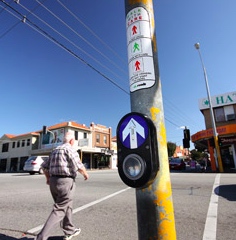Measuring similar systems success
In October 2009 the Land Transport Authority Singapore (LTA) introduced a system called the Green Man Plus. This system allowed elderly people over 60 and disabled pedestrians between 3-13 seconds increased time at various crossing intersections. Those who applied were able to swipe their special version of the LTA card (similar to the Opal card) at any Green Man Plus intersections. The program began with five trial systems and the system allowed pedestrians additional walking time subject to the varied size of the intersection.
Since 2009 there are currently 250 Green Man Plus intersections in place across the city. By the end of 2015 Singapore plans to have 495 in operation.
The system received such positive feedback and results that there are calls to expand across the city even further.
#TAPANDINCREASETHEGAP works similarly to the current Singapore system. The case of improved senior safety and positive community engagement with the system provides evidence for the beneficial nature of the Senior Step Card
WATCH below : Singapore Green Man Plus
What do you think of the system in Singapore? Comment below
